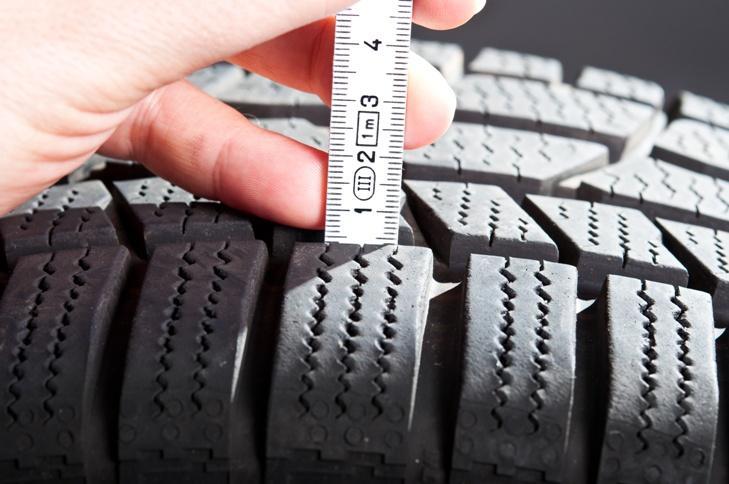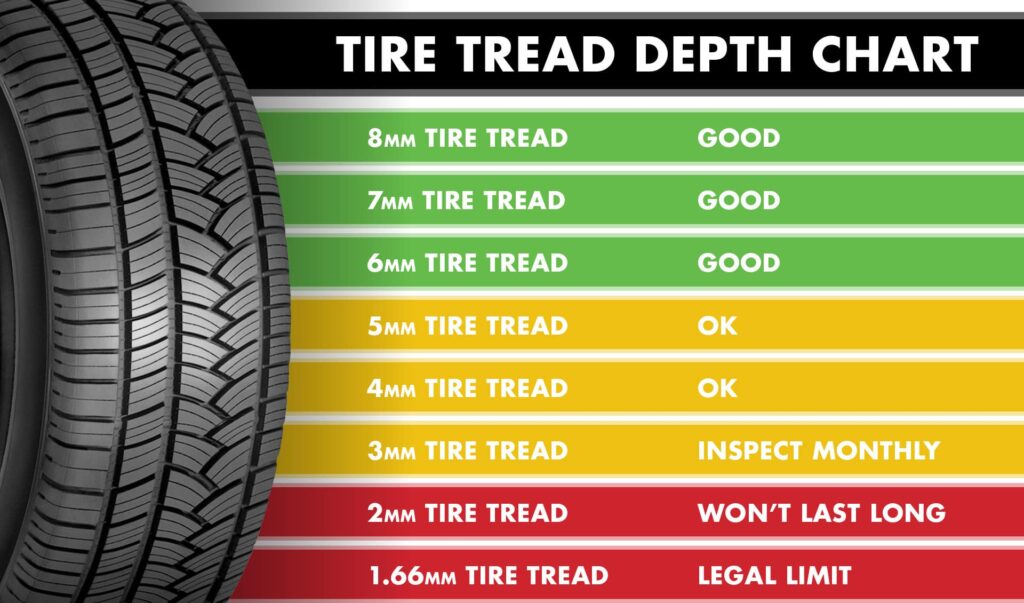Tires typically last between 25,000 and 50,000 miles, depending on various factors. Proper maintenance can extend tire life significantly.
Tires are crucial components of any vehicle, directly impacting safety and performance. Their lifespan varies based on driving habits, road conditions, and maintenance practices. Regularly checking tire pressure, alignment, and rotation can help maximize their longevity. Quality tires from reputable manufacturers also tend to last longer.
Driving on well-maintained roads and avoiding excessive speeding or abrupt braking can further extend tire life. Understanding these factors can help you get the most out of your tires, ensuring a safer and more economical driving experience. Investing in good tires and proper maintenance pays off in the long run.

Factors Influencing Tire Longevity
Understanding how long tires last depends on many factors. The life of your tires can be influenced by their material, design, and your driving habits. Let’s explore these factors in detail.
Material And Design
The materials used in tire manufacturing play a crucial role in their longevity. Tires made from high-quality rubber and composites tend to last longer. The design of the tire, including tread pattern, also impacts its lifespan.
Tread patterns can affect grip and wear. Deeper treads generally provide better traction but may wear out faster on hard surfaces. Tires designed for specific weather conditions, like winter or all-season tires, also have unique wear characteristics.
| Material | Longevity |
|---|---|
| High-quality rubber | Longer lifespan |
| Standard rubber | Average lifespan |
Driving Habits Impact
Your driving habits significantly affect tire life. Aggressive driving, with rapid acceleration and hard braking, wears out tires faster.
- Speeding: Driving at high speeds generates heat, which can degrade tires.
- Frequent braking: Constant braking causes more friction and wear.
- Sharp turns: Taking sharp turns can erode tire edges.
Maintaining proper tire pressure and regular rotation also helps. Under-inflated tires increase friction, leading to faster wear.
- Check tire pressure monthly.
- Rotate tires every 5,000 to 7,500 miles.
By adopting good driving habits, you can extend the life of your tires.

Average Mileage Expectancy Of Tires
Knowing how long tires last is important. It helps plan for replacements and budgets. Tire lifespan depends on many factors. These include the type of tire, driving habits, and road conditions.
Variation By Tire Type
Different tires have different lifespans. Here are some common types:
- All-season tires: These last between 50,000 and 70,000 miles.
- Performance tires: These offer better grip but last around 20,000 to 40,000 miles.
- Off-road tires: They are rugged and last about 40,000 miles.
- Winter tires: These are designed for cold and snowy conditions. They last around 30,000 miles.
Manufacturer Guarantees
Tire manufacturers often provide mileage guarantees. These guarantees promise a certain lifespan for the tire. Here are some examples:
| Manufacturer | Mileage Guarantee |
|---|---|
| Michelin | Up to 80,000 miles |
| Goodyear | Up to 70,000 miles |
| Bridgestone | Up to 65,000 miles |
| Pirelli | Up to 50,000 miles |
These guarantees give a good idea of tire longevity. But real-world results can vary. Driving habits and road conditions play a big role in tire wear. Always check your tires regularly. Proper maintenance ensures maximum lifespan.
Signs Of Tire Wear And Tear
Tires don’t last forever. Recognizing the signs of wear and tear is crucial. Knowing these signs helps keep your vehicle safe. Let’s explore the key indicators.
Visual Indicators
Visual checks are the easiest way to spot tire wear. Look for these signs:
- Tread Depth: Use a penny to check tread depth. If Lincoln’s head is visible, replace the tire.
- Cracks and Bulges: Check for cracks in the sidewalls. Bulges can mean the tire is weak.
- Uneven Wear: Uneven wear patterns can suggest alignment issues. Rotate tires regularly to avoid this.
- Exposed Cords: If you see exposed cords, replace the tire immediately.
Performance Clues
Performance issues can also indicate tire wear. Pay attention to these clues:
- Vibration: Excessive vibration can signal tire imbalance or damage. Have it checked by a professional.
- Poor Handling: If your car feels sluggish or unresponsive, your tires might be worn.
- Longer Braking Distance: Worn tires can increase braking distance. This is dangerous and needs attention.
- Frequent Air Loss: If a tire loses air often, it might have a puncture or be worn out.
| Indicator | Description |
|---|---|
| Tread Depth | Use a penny to check. Replace if Lincoln’s head shows. |
| Cracks and Bulges | Look for sidewall cracks and bulges. |
| Uneven Wear | Suggests alignment issues. Rotate tires. |
| Exposed Cords | Visible cords mean immediate replacement. |
| Vibration | Excessive vibration needs professional check. |
| Poor Handling | Sluggish response indicates worn tires. |
| Longer Braking Distance | Increased braking distance needs attention. |
| Frequent Air Loss | Punctures or wear cause frequent air loss. |
Maximizing Your Tires’ Lifespan
Keeping tires in good condition saves money and ensures safety. Simple habits can make tires last longer.
Regular Maintenance
Regular maintenance is key to extending tire life. Follow these steps to keep tires in top shape:
- Rotate Tires: Rotate tires every 6,000 to 8,000 miles.
- Balance Tires: Ensure tires are balanced to avoid uneven wear.
- Align Wheels: Wheel alignment should be checked yearly.
Proper Inflation Practices
Proper inflation is crucial for tire health. Under-inflation and over-inflation can damage tires. Here’s how to maintain correct tire pressure:
- Check Pressure Regularly: Check tire pressure once a month.
- Use a Reliable Gauge: Use a quality gauge for accurate readings.
- Follow Manufacturer’s Guidelines: Refer to the car manual for the recommended pressure.
| Maintenance Task | Frequency |
|---|---|
| Rotate Tires | Every 6,000 to 8,000 miles |
| Check Tire Pressure | Monthly |
| Wheel Alignment | Yearly |
Taking these steps will help maximize your tires’ lifespan. Proper care ensures your drive is safe and smooth.
When To Replace Vs Repair Tires
Knowing when to replace vs repair tires can save money and ensure safety. The decision depends on various factors including the extent of tire damage, cost implications, and overall benefits. This section aims to guide you through the process of making an informed choice.
Assessing Tire Damage
Start by examining the tire for visible damage. Look for punctures, cuts, and sidewall bulges. Use a tread depth gauge to measure the tread. If the tread is below 2/32 inches, it’s time for a replacement. Uneven wear can indicate alignment issues, which may require repair or replacement. Also, check for embedded objects like nails or screws.
Cost-benefit Analysis
Consider the cost of repair versus replacement. A simple puncture repair may cost $10-$20. Replacing a tire can cost $100-$300. Here is a table to help you decide:
| Type of Damage | Repair Cost | Replacement Cost |
|---|---|---|
| Puncture | $10-$20 | $100-$300 |
| Sidewall Bulge | Not Repairable | $100-$300 |
| Uneven Wear | Depends on Alignment | $100-$300 |
Repairing is cheaper but not always the best option. Evaluate the tire’s age. Tires older than six years may need replacement regardless of tread condition. Also, consider the tire’s brand and type. High-performance tires may justify a replacement for optimal safety.
Pros of Repairing:
- Cost-effective
- Quick fix
- Extends tire life
Cons of Repairing:
- May not be as safe
- Temporary solution
- Cannot fix severe damage
Pros of Replacing:
- Increased safety
- Better performance
- Long-term solution
Cons of Replacing:
- More expensive
- Time-consuming
In summary, assess the damage and weigh the costs. Choose the option that offers the best value and safety.
The Environmental Impact Of Tire Maintenance
Maintaining your tires affects the environment significantly. Proper tire care reduces waste and saves resources. It also cuts down on harmful emissions.
Recycling Worn Tires
Many tires end up in landfills, which harms the environment. Recycling can make a big difference. Recycled tires are used in playgrounds and roads. Some even turn into new products. Find a local recycling center to help.
| Recycling Use | Description |
|---|---|
| Playgrounds | Used as safe, soft ground cover |
| Roads | Mixed into asphalt for better grip |
| New Products | Turned into rubber mats, shoes, and more |
Eco-friendly Driving Tips
Driving habits also affect tire lifespan and the environment. Here are some eco-friendly tips:
- Avoid fast acceleration and hard braking
- Maintain steady speeds
- Keep tires properly inflated
- Rotate tires regularly
- Check alignment often
These habits save fuel and reduce tire wear. They help keep the planet cleaner.
Frequently Asked Questions
How Long Do Tires Last On Average?
Tires last on average between 25,000 to 50,000 miles. Regular maintenance and proper driving habits can extend their lifespan.
How Often Should Tires Be Replaced?
Tires should typically be replaced every 6 years or 40,000-60,000 miles. Check for tread wear and damage regularly.
Can Tires Last 100 000 Miles?
Yes, some tires can last 100,000 miles. Proper maintenance, driving habits, and quality tires are key factors. Always follow manufacturer recommendations.
How Long Do 40,000 Mile Tires Last?
40,000 mile tires typically last around 3 to 4 years. Longevity depends on driving habits, road conditions, and maintenance. Regularly check tire pressure and alignment to maximize lifespan.
Conclusion
Understanding tire lifespan helps ensure safety and performance. Regular maintenance and proper driving habits extend tire life. Always check your tires frequently for wear and tear. Replace them as needed to avoid potential hazards. Keep these tips in mind to get the most out of your tires and drive safely.





















